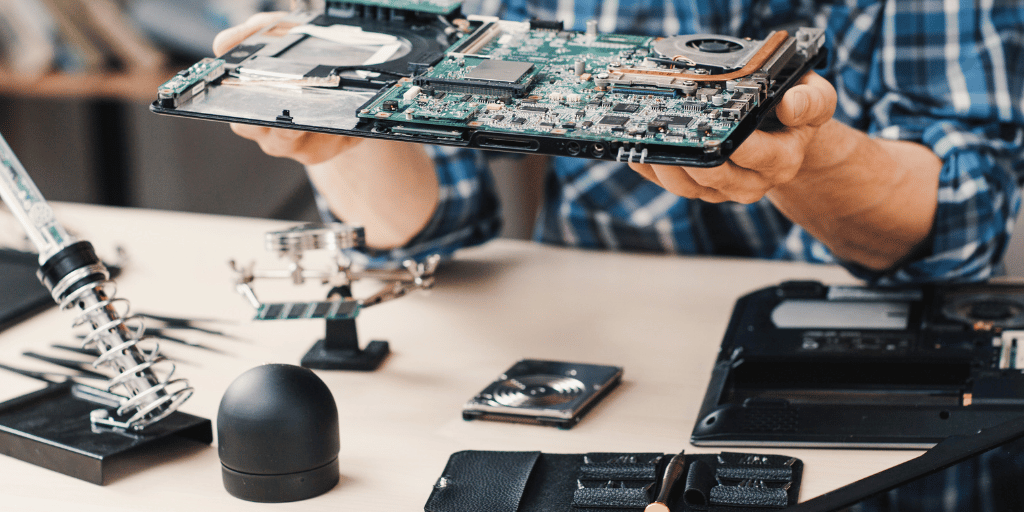In today’s rapidly advancing technological era, individuals and professionals alike are frequently faced with the pivotal decision of upgrading computer vs buying new models.
This decision goes beyond purely financial considerations, weaving into the fabric of performance requirements, cost-effectiveness, and increasingly, environmental responsibility.
With over a decade of expertise in the technology sector, coupled with a proficiency in articulating complex subjects with clarity, this in-depth analysis is designed to guide you through the complex landscape of making an informed choice between upgrading your existing computer and purchasing a new one.
Understanding Your Needs When Upgrading Computer vs Buying New Confusion
Evaluating Current and Future Requirements
The cornerstone of your decision-making process lies in a clear understanding of your current and anticipated performance needs. High-intensity tasks such as advanced gaming, 3D modeling, and video editing necessitate strong processing capabilities, high-grade graphics cards, and expansive memory.
In these scenarios, upgrading individual components like the GPU, RAM, or SSD might offer a temporary boost.
However, the finite compatibility of your current system’s motherboard may render it incapable of accommodating the latest advancements, tipping the scales in favor of purchasing a new, more capable machine.
Conversely, for users whose activities orbit around web browsing, document creation, and media consumption, strategic upgrades can significantly enhance system performance without the need for a complete overhaul.
Identifying whether your requirements are likely to evolve in the near future is crucial in making a cost-effective decision that also aligns with your long-term technological needs.
Comprehensive Cost-Benefit Analysis
Short-Term Versus Long-Term Financial Implications
Examining the financial aspect of upgrading versus buying new requires a nuanced understanding of both immediate and long-term costs.
Upgrades, while seemingly economical in the short term, can quickly accumulate in cost, especially if multiple components need refreshing to keep pace with technological advancements.
Upgrade Costs
Upgrading can extend the lifespan of your current setup and offer a tailored approach to improving performance. Incremental upgrades, such as installing an SSD or expanding RAM, can provide substantial performance boosts at a fraction of the cost of a new system.
This piecemeal strategy allows for budget flexibility and the option to prioritize upgrades based on immediate needs.
Total Cost of Ownership
Investing in a new computer, while initially more costly, may provide better long-term value. New systems come equipped with the latest hardware, benefiting from full warranties, enhanced security features, and superior energy efficiency.
These factors, combined with the inevitable obsolescence of older systems, could make a new purchase more economically viable over time.
Environmental Considerations
The Impact of E-Waste
The environmental dimension of this decision is increasingly significant in today’s eco-conscious world. The global challenge of electronic waste, with millions of tonnes of tech products discarded annually, underscores the importance of extending the lifespan of existing devices.
Upgrading can contribute to mitigating this issue by reducing the demand for new products and the associated environmental toll of their production and disposal.
Energy Efficiency and Sustainability
It’s important to note, however, that newer computer models often incorporate energy-saving technologies that older systems cannot match.
These advancements can lead to lower energy consumption over the lifespan of the device, potentially offsetting the environmental impact of manufacturing a new computer.
When considering upgrades, it’s crucial to evaluate whether the improvements will lead to meaningful gains in energy efficiency or if a new, greener technology would serve as a better long-term solution.
Making an Informed Decision
Choosing between upgrading your current computer or purchasing a new one is a multifaceted decision that requires careful consideration of your specific needs, financial situation, and environmental values. It’s essential to:
- Assess your performance requirements: Understand whether your current and future tasks demand the latest technology or if they can be satisfied with targeted upgrades.
- Analyze the costs: Consider both the immediate and cumulative expenses of upgrades versus the long-term benefits and cost savings of a new purchase.
- Evaluate environmental impact: Weigh the advantages of extending the life of your current system against the potential environmental benefits of newer, more energy-efficient technology.
Conclusion
The path forward involves more than a simple cost comparison. It demands a holistic view of your technology usage, an assessment of financial implications, and a consideration of the environmental footprint of your choices.
Whether you opt to upgrade your existing system or invest in a new computer, the decision should ultimately serve your personal and professional needs while aligning with your financial and environmental values.
Ready to make the smart choice for your computer? Dignity New Zealand offers expert services to upgrade or find your new perfect match. Don’t wait! Boost your performance and make a choice that’s good for your wallet and the planet. Contact us today and elevate your tech experience!



